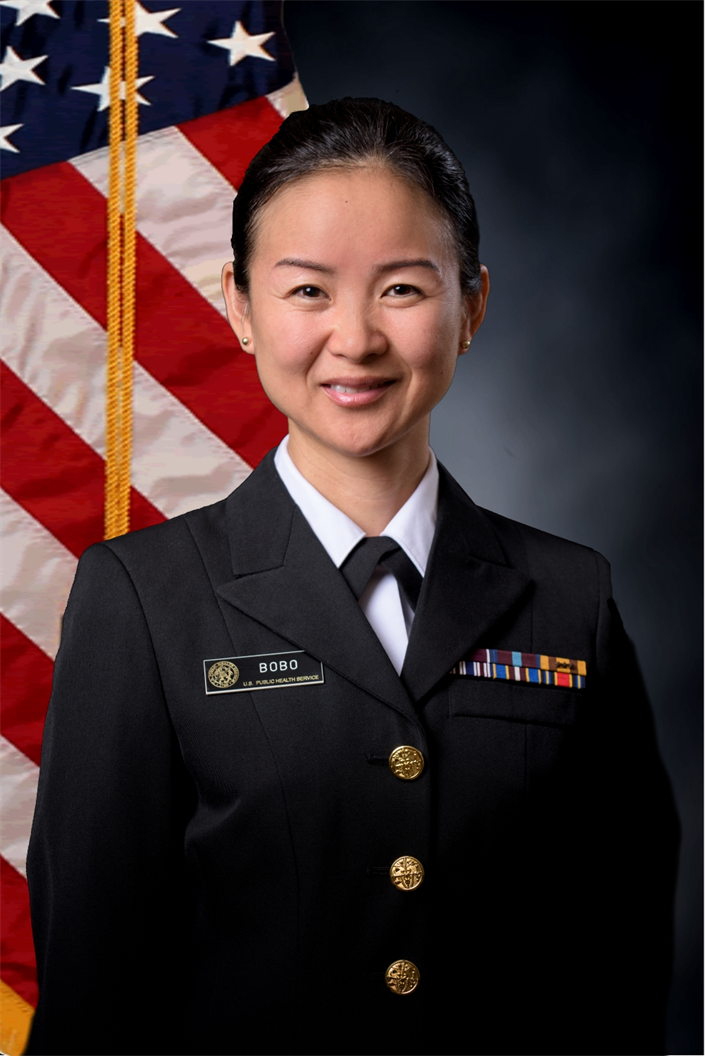2016 Independence Day Celebration
By CDR Qiao Bobo
Independence Day in the nation’s capital is a wonder to behold. An estimated 750,000 visitors gather on the National Mall and surrounding areas for various July 4th celebratory activities, including the National Independence Day Parade, Capitol Fourth Concert on the West Lawn of the U.S. Capitol, Smithsonian Folk Life Festival on the National Mall, a multi-act concert at RFK Stadium, Washington Nationals baseball game, and firework show.
Independence Day is also a logistical wonder to behold, though most visitors will never know the preparation, planning, and execution that go into the event. For the last three years, I have been a member of Regional Incident Support Team-National Capital Region (RIST-NCR), which deploys for the annual national celebration. RIST-NCR is a USPHS Tier 1 deployment team, and members are expected to be able to deploy within 12 hours of notification of an event in the NCR. RIST-NCR team members typically support both non-emergency and Emergency Support Function (ESF) #8 missions by staffing the National Capital Area Incident Response Coordination Team (IRCT) and the Emergency Management Group (EMG) in the U.S. Department of Health and Human Services (HHS) Secretary's Operation Center (SOC) for both planned and unplanned events. The IRCT has a built-in command structure and is responsible for directing all ESF #8 response assets in the field. The IRCT is scalable to meet the demands of the incident and coordinates the activities of all Federal ESF #8 resources deployed to assist states, Tribal Nations, jurisdictions, and other federal agencies. RIST-NCR was created in 2009 and is led by Team Commander CAPT Sally Hu, and has successfully been deployed more than 41 times to support the health and medical needs in the capital region. The team offers many deployment and training opportunities to members as well. For example, I have been deployed five times and participated in four multi-day training courses since I joined the team. In addition to the July 4th Independence Day celebrations, I have been deployed on a number of occasions, such as for the Nuclear Security Summit and the State of the Union Address; and in various capacities, such as an Information Officer, Admin/Finance Section Officer, Admin/Finance Section, Time and Travel Unit Lead, Admin/Finance Section Claim and Compensation Unit Lead, and most recently as the Admin/Finance Section Chief.
I have enjoyed all of my deployments, but the 2016 Independence Day celebration was particularly memorable. Our mission and objectives were to ensure the safety and accountability of deployed personnel; deploy health and medical resources to meet the health and medical needs of the population at risk; develop, plan, and brief to work collaboratively with on-site partners; support the deployment and redeployment of direct support and contingency resources; provide resources to support an initial response capability in a mass casualty incident; prepare for joint reception staging, onward movement, and integration. The Independence Day celebration is listed as a Special Event Assessment Rating (SEAR) Level 2. While there were no specific, credible threats of terrorist attacks this year, the National Capital Region remains a potential target for attacks.
This year was the first time I was deployed as the Admin/Finance Section Chief, together with the Planning Section Chief and the Operation Section Chief from RIST-NCR. My team was responsible for supporting the IRCT Commander and Operations Section through tracking of such issues as reimbursement and regulatory compliance. We collaborated with all other sections, generated daily reports to headquarters, and communicated with at least 80 deployed personnel.
My journey to become the Section Chief began seven months prior to this deployment when I participated in the USFA (U.S. Fire Administration) Type 3 Incident Management Team Course (also known as the All-Hazards Incident Management Team (AHIMT) Response Course (AHIMT O-305 Course)). As part of this simulation I served as the Admin/Finance Section Chief. The 5-day course was sponsored by the Office of Emergency Management under the HHS Office of the Assistant Secretary for Preparedness and Response (ASPR). This course serves as a basic introduction to the activities and processes of a USFA Type 3 IMT and is designed for those who are assigned to function in a Type 3 IMT during a large/complex incident, typically extending into the second operational period. This training proved extraordinarily useful for my deployment as the Admin/Finance Section Chief during the 2016 Independence Day celebration.
RIST-NCR deployments provide USPHS officers a number of opportunities to gain Incident Command System (ICS) leadership experience and provide significant contributions to HHS’s response missions by rapidly responding to public health needs in the National Capital Region. Spending your holiday in the Secretary's Operations Center may not be everybody’s idea of a holiday; however, standing ready to support the safety of nearly one million Americans is a privilege that PHS officers will find rewarding. I truly appreciate the deployment and training opportunities I have experienced as a RIST-NCR team member.
I would encourage all PHS officers in the National Capital Region to look into joining the RIST-NCR Team. Please contact RIST-NCR Team Commander CAPT Sally Hu at sally.hu@nih.gov or Deputy Team Commander CDR James Kenney at James.Kenney@fda.hhs.gov if you have any questions.

CDR Qiao Bobo
Admin/Finance Section Chief
RIST-NCR
Next Deployment Narrative Back to Deployment Narrative homepage